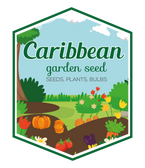
Arrowleaf Balsamroot SEEDS , PERENNIAL WILDFLOWER
- Get free shipping to lower 48 states on orders $54.95+ (Most Items), excluding live plants, plant bulbs, and black plastic nursery crate.
- Most orders are processed by the next day !
- Safe Seed Pledge
- Select your desired size and/or color from the available options.
Native Bees, Pollinator, U.S. Native, Wildlife
Arrowleaf Balsamroot is a long-lived, tap-rooted perennial with arrowhead-shaped leaves and yellow sunflower like flowers. It is native to mountains of the western U.S. and can be abundant in open hillsides up to 9,000 feet elevation. Useful for reclamation, pollinator and wildlife mixes.Drought tolerant perennial; full sunlight. Showy yellow sunflower-like flowers bloom May to July along open hillsides, grasslands, sagebrush, or open pine forests. Leaves, stems and flowers provide valuable spring forage for bighorn sheep, deer, elk and pronghorn. Good pollinator species; seeds eaten by birds and rodents; may be an indicator of good sage-grouse habitat
Sowing: Since the arrowleaf balsamroot (Balsamorhiza sagittata) plant does not take transplanting well, it should be direct sown. In late fall, plant the seed 1/2" deep in full sun and well drained soil. Sow rather thickly, since germination rates will be naturally low; seeds should sprout within 6-10 days. For spring planting, stratify by mixing the seed with moist sand and storing in the refrigerator for 6-8 weeks; direct sow.
Growing: Keep seedlings free from weeds, and water occasionally in dry weather. The arrowleaf balsamroot plant develops rather slowly, but lasts for generations once established. Flowers may not appear until the second or third season of growth. After flowering, the plant will go dormant and turn brown until spring. If the winter soil is too wet, the roots may rot. This plant attracts bees and butterflies, and can be used for erosion control.
Harvesting: For fresh flowers, cut the stems long and place them in water immediately. Roots can be harvested for herbal or medicinal use in the fall or spring.
Seed Saving: Watch the ripening seed heads carefully, since small birds and rodents often eat it as soon as it matures. The seed heads turn brown when ripe, and should be removed before they shatter. Rub the dried seed heads lightly to separate the seed from the husks. Store the seed in the refrigerator until planting.
Select your desired size and color from the available option
LET OUR CUSTOMER SPEAK FOR US

![[Seeds] - Caribbeangardenseed](http://caribbeangardenseed.com/cdn/shop/files/gift-card-gift-card-1_1024x1024_dfa857db-9150-4315-a362-7f0bb3fb9c47_60x28.png?v=1722895789)








